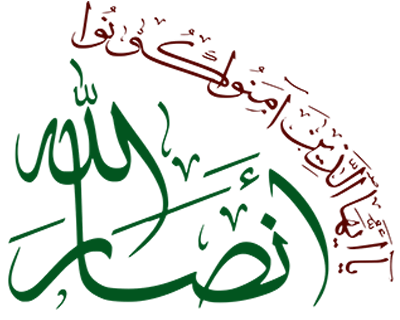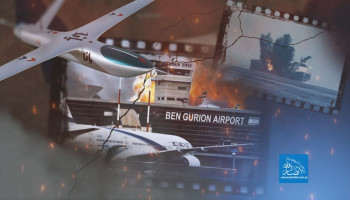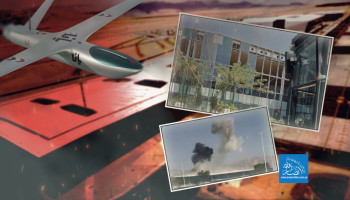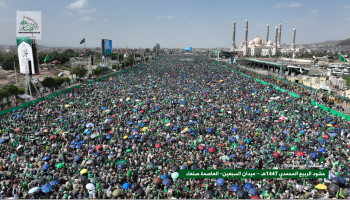Ansarollah Website Official Report
Published: Rabiʻ I 15, 1447 AH
Seven hundred days of Zionist aggression on the Gaza Strip have passed—days that felt like decades of fire and hell. Seven hundred mornings rose only with the smoke of Zionist airstrikes and the smell of American gunpowder. Seven hundred nights brought no sleep for Gazans, only the roar of cannons, the rumble of tanks, the whir of warplanes, and the sound of explosions.
Here, where the sea narrows on its people, and the land tightens around their dreams, more than 2.4 million souls stand against a war of extermination—the longest and harshest in modern memory. There is no doubt: the perpetrator is a Zionist Jew who knows no meaning of humanity.
The numbers tell the story of annihilation: 268,000 housing units completely destroyed, 148,000 severely damaged. An average of 594 homes lost each day—25 every hour. The Zionist killing machine has spared nothing: homes and residential towers, schools and universities, hospitals and health centers, power stations, water wells, roads, and even the features of childhood.
Ninety percent of Gaza has been destroyed. More than $68 billion in losses have been recorded—numbers that cannot capture the reality of a life collapsed: cities turned to rubble, neighborhoods erased, dreams shattered at the doors of tents.
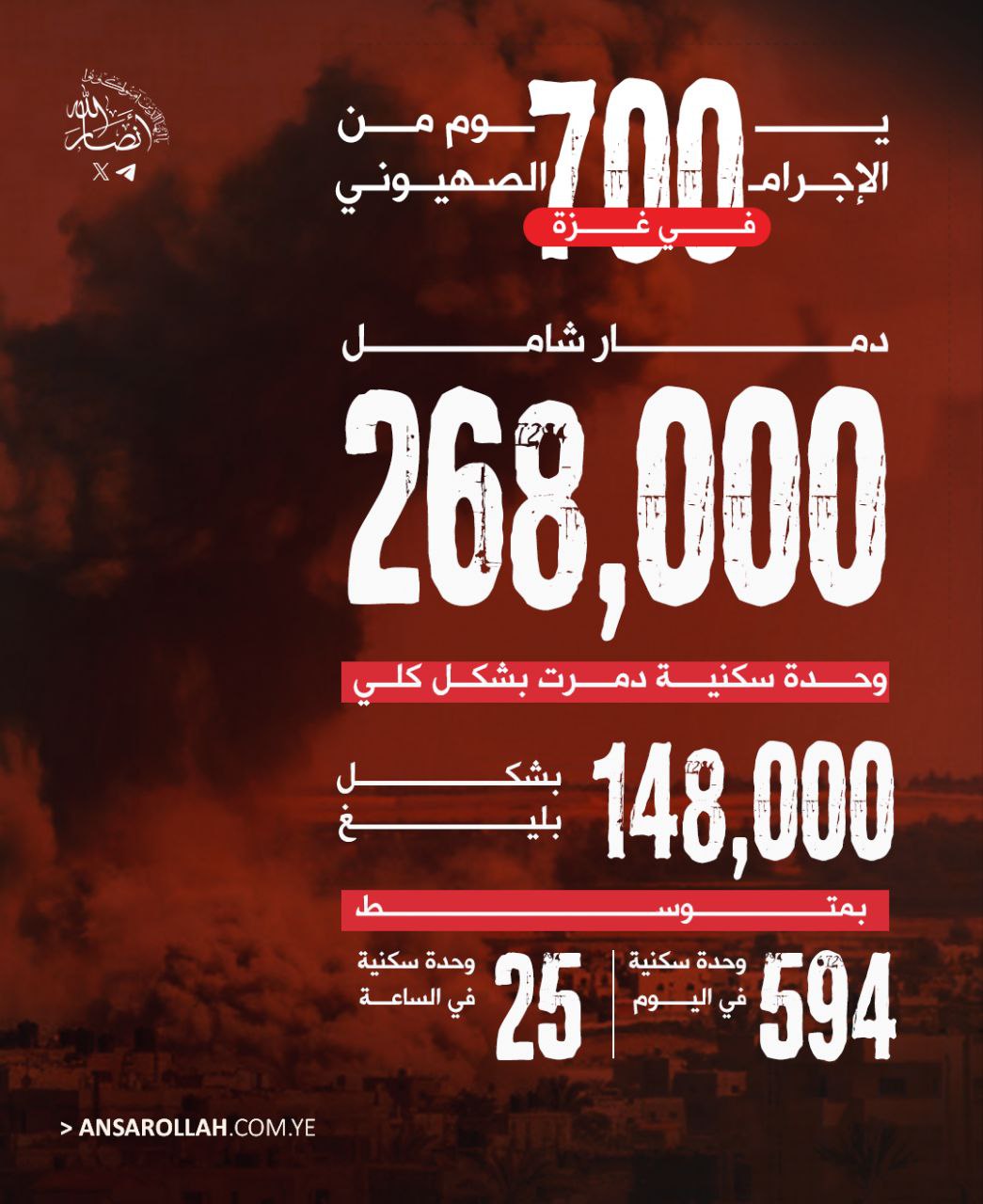
Official figures reveal an ever-worsening tragedy: 64,300 martyrs, including 20,000 children and 12,500 women. Among them, 1,009 were children under the age of one, and 450 newborns were born and killed during the genocide. The toll also includes 1,670 medical workers, 139 civil defense personnel, 248 journalists, 173 municipal employees, more than 780 police and aid security personnel, and 860 from the sports sector.
The devastation is collective. Entire families were wiped out: 2,700 families erased from records entirely, and thousands of others left with only a lone survivor carrying the weight of loss. More than 6,000 families were reduced to a single orphaned survivor.
In Gaza, every home carries a story, every story a tear. There is no longer a difference between family names and numbers in the martyr registers—the enemy’s intent was to erase memory before erasing bodies.
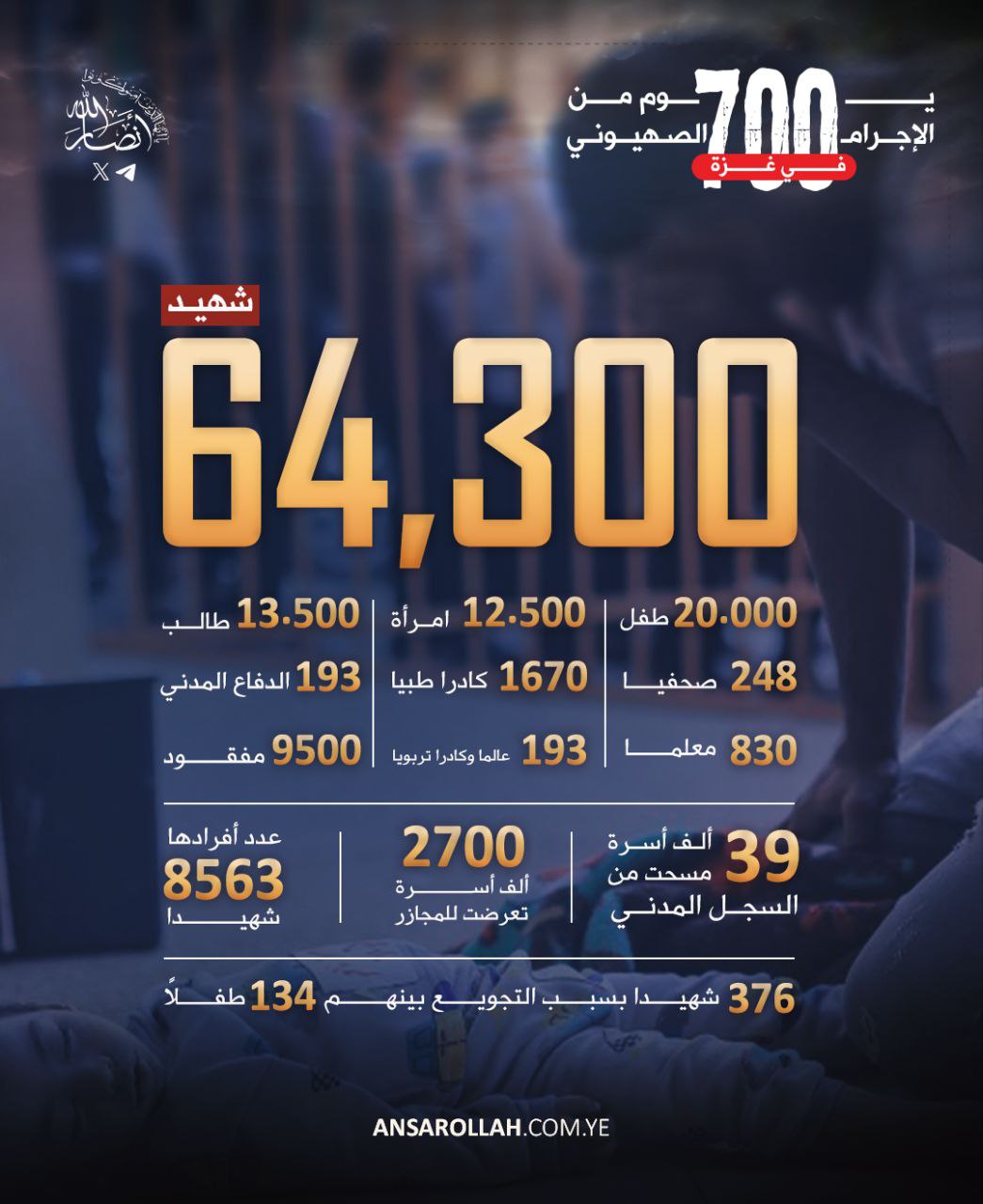
Survival has not meant salvation. More than 162,000 wounded lie in Gaza’s collapsing hospitals, the majority without treatment or hope of recovery. Around 19,000 require long-term rehabilitation, yet who in Gaza has the luxury of time and medicine?
Amputations number 4,800, with 18% children—turning play into the struggle of crutches. Some 1,200 lost their sight, 1,200 live with paralysis. Even the ability to walk toward tomorrow, or to look at the sky, has been stolen.
The war has left 21,182 widows, 56,320 orphans, more than 2.1 million cases of infectious disease due to forced displacement, and 71,338 cases of hepatitis.

Death has not only fallen from the sky, but also from hunger. At least 376 people—including 134 children—died from starvation in a world of abundance. Even humanitarian aid became a curse: 23 killed by airdrops.
Disease has claimed thousands more. Forty-one percent of kidney patients lost their lives due to lack of treatment. Women bore double the burden: 12,000 miscarriages caused by malnutrition and lack of care.
Displacement camps turned into graveyards of silence. Seventeen people, including 14 children, froze to death in the bitter cold, their frail bodies unable to withstand the harsh winter.
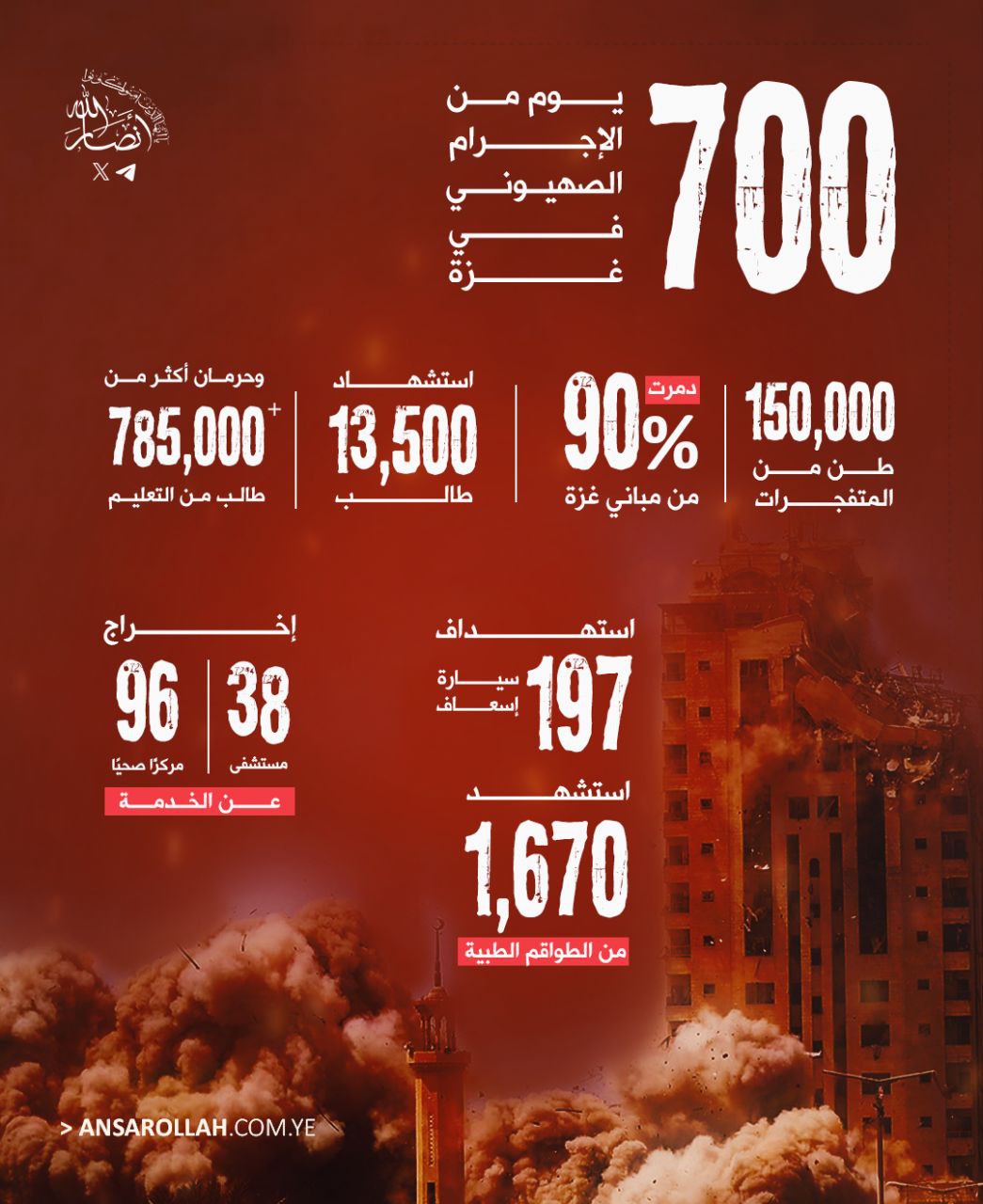
The health sector was not spared. Thirty-eight hospitals were destroyed or forced out of service, 197 ambulances targeted, and 788 attacks struck health facilities. The education sector collapsed as well: 95% of Gaza’s schools were damaged, more than 160 universities and schools flattened, and over 13,500 students killed. At least 785,000 students are denied education, along with 830 teachers and 193 academics killed.
The enemy cut every lifeline. It destroyed 725 central water wells and 134 freshwater projects, massacring more than 9,400 people in the process, most of them children. Over 5,080 km of electricity networks, 2,285 transformers, and 235,000 electricity meters were destroyed, depriving Gaza of more than 2.1 billion kilowatt hours.
Water and sewage networks spanning 700,000 meters each were erased, and more than 3 million meters of roads destroyed. Government buildings (244), sports facilities (292), and heritage sites (208) were flattened.
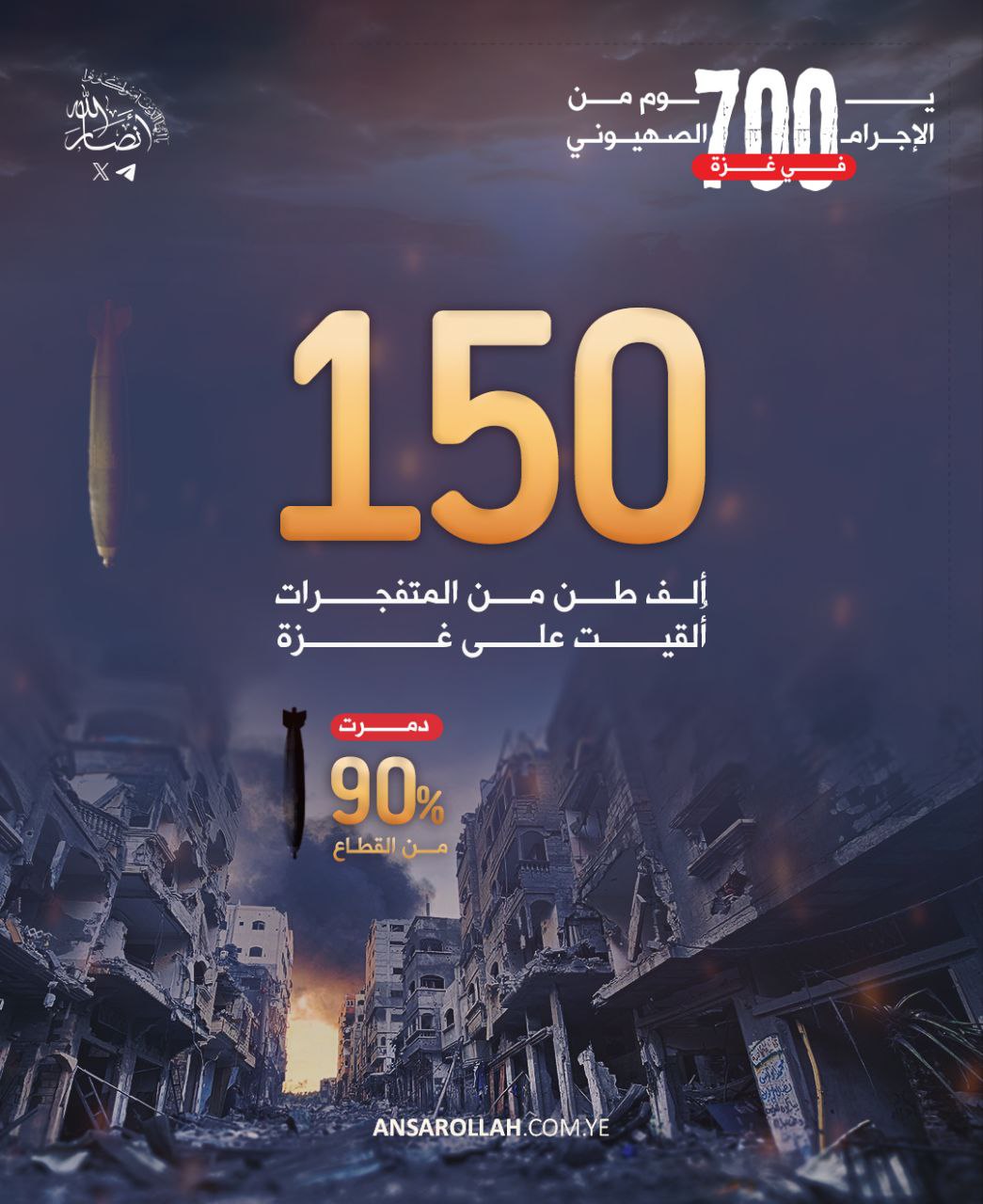
Gaza’s green lands were burned. Agricultural losses exceed $2.8 billion. More than 94% of farmland—167,000 of 178,000 dunams—was destroyed. Wells, barns, and greenhouses were annihilated. Annual vegetable production plummeted from 405,000 tons to just 28,000. The fishing sector was completely destroyed, cutting off the last window of livelihood.
In total, more than 150,000 tons of explosives—equivalent to dozens of small nuclear bombs—were dropped on Gaza. Cities were erased, villages buried, so-called “safe zones” bombed more than 100 times.
Seven hundred days later, no corner of Gaza has been spared the fire. And yet, amid the ruins, Gaza remains unbroken.
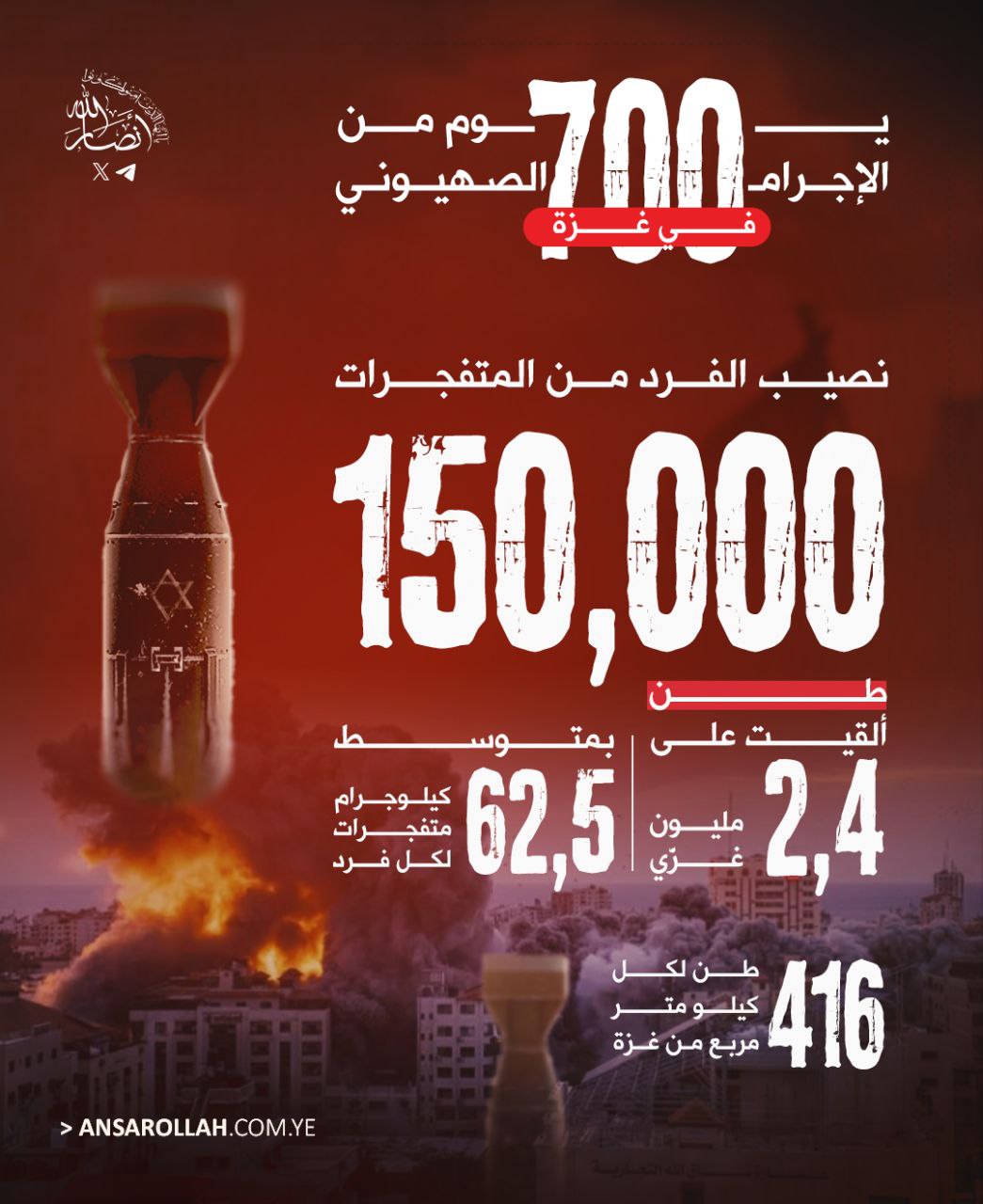
After 700 days, Gaza stands as a witness to global failure and a silence that amounts to complicity. Every statistic is an open wound. Every martyr is a stolen story. Every orphan is a stolen future.
And yet, despite everything, Gaza does not break. From beneath the rubble, children are born again. From the tents, poetry of resilience is written. On the shores of the sea, hope rises that the land—no matter how burned—will sprout life again.
Gaza is not merely a city under siege or bombardment. Gaza is a story of a people fighting for the right to life, for a homeland, for a memory that cannot be erased.
Here, where the lights go out, a ray rises from the ruins to remind the world that Gaza—despite it all—still beats.
